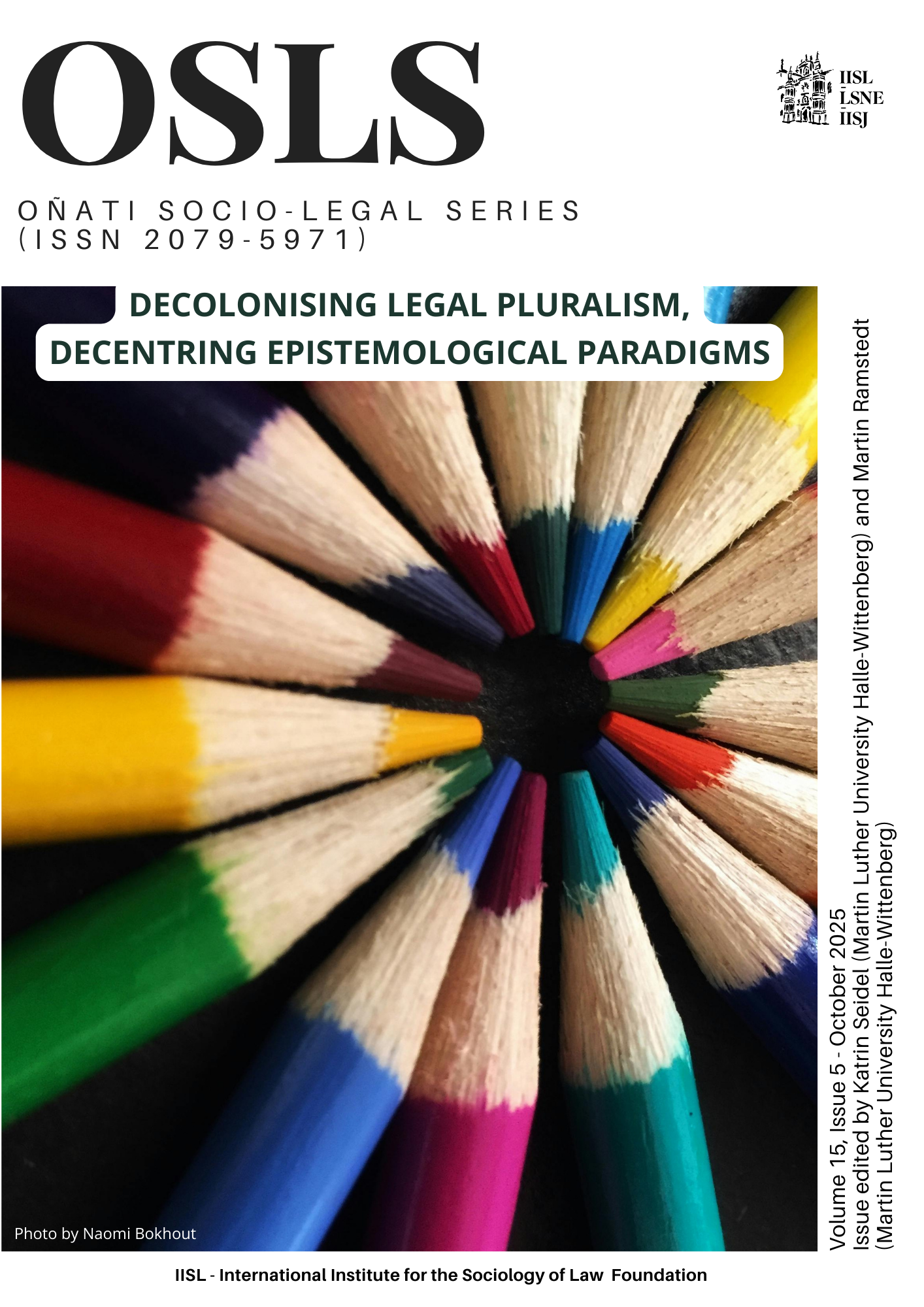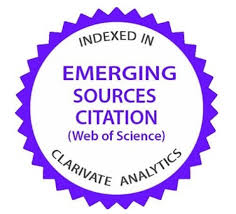Psychological Interventions for Sex Offenders in Uruguay
Possibilities, Obstacles and Challenges
DOI:
https://doi.org/10.35295/osls.iisl.2301Keywords:
Sexual violence, sex offenders, psychological interventions, post-prison context, public policyAbstract
This article addresses one of the least-known aspects of the phenomenon of sexual violence in Uruguay, sexual offenders, and psychological intervention responses within the framework of changes in public policy on gender-based violence. We analyze the implementation of a psychological program for sexual offenders linked to the post-prison context. To this end, we chose the case study method, using techniques that include diverse sources of information from group interviews with the technical team, participant observation, interviews with management, and documentary analysis. The results show that psychological interventions for sexual offenders were implemented in an opportunistic political and institutional context, but with difficulties in legitimizing and consolidating them on the institutional agenda. The theoretical and technical approach that underpins these interventions, as well as professionals' attitudes toward sexual offenders, constitute challenges that require specialized ongoing training.
Downloads
Metrics
Global Statistics ℹ️
|
348
Views
|
291
Downloads
|
|
639
Total
|
|
References
Atkinson, P., y Coffey, A. 2006. Analysing documentary realities. En: D. Silverman, ed., Qualitative Research. Londres: Sage, 56-75.
Barboni, L., y Bonilla, N., 2019. Instrumentos de evaluación psicológica en el ámbito jurídico: una aproximación a las prácticas profesionales en Uruguay. Revista Criminalidad [en línea], 6(2), 133-144. Disponible en: https://doi.org/10.47741/17943108.61
Basile, K., y Smith, S., 2011. Sexual violence victimization of women: prevalence, characteristics, and the role of public health and prevention. American Journal of Lifestyle Medicine [en línea], 5(5), 407-417. Disponible en: https://doi.org/10.1177/1559827611409512 DOI: https://doi.org/10.1177/1559827611409512
Boer, D.P., et al., 1997. Manual for the Sexual Violence Risk - 20: Professional Guidelines for Assessing Risk of Sexual Violence. Vancouver: The Mental Health, Law, & Policy Institute.
Bonta, J., y Andrews, D.A., 2017. The psychology of criminal conduct [en línea]. 7ª ed. Nueva York: Routledge. Disponible en: https://doi.org/10.4324/9781315677187 DOI: https://doi.org/10.4324/9781315677187
Comisionado Parlamentario para el Sistema Carcelario, 2016. Informe anual 2016. Uruguay: Poder Legislativo.
Comisionado Parlamentario para el Sistema Carcelario, 2017. Informe anual 2017. Uruguay: Poder Legislativo.
Comisionado Parlamentario para el Sistema Carcelario, 2019. Informe anual 2019. Uruguay: Poder Legislativo.
Comisionado Parlamentario para el Sistema Carcelario, 2020. Informe anual 2020. Uruguay: Poder Legislativo.
Comisionado Parlamentario para el Sistema Carcelario, 2023. Informe anual 2023. Uruguay: Poder Legislativo.
Contreras, J.M., et al., 2010. Violencia sexual en Latinoamérica y el Caribe: análisis de datos secundarios [en línea]. Iniciativa de Investigación sobre la Violencia Sexual. Disponible en: http://clacaidigital.info/handle/123456789/980
Cording, J., Beggs Christofferson, S., y Grace, R., 2016. Challenges for the theory and application of dynamic risk factors. Psychology, Crime & Law [en línea], 2(1-2), 84-103. Disponible en: https://doi.org/10.1080/1068316X.2015.1111367 DOI: https://doi.org/10.1080/1068316X.2015.1111367
Creswell, J., y Poth, C., 2017. Qualitative Inquiry and Research Design. London: Sage.
Denzin, N., y Lincoln, Y., 2018. The SAGE Handbook of Qualitative Research. Beverly Hills: Sage.
Díaz Sanjuán, L., 2011. Procedimiento y proceso del Método Clínico [en línea]. Ciudad de México: Facultad de Psicología, Universidad Nacional Autónoma de México. Disponible en: https://www.psicologia.unam.mx/documentos/pdf/publicaciones/Procedimiento_y_Proceso_del_Metodo_Clinico_Lidia_Diaz_Sanjuan_TAD_3_Sem.pdf
Dietz, P., 2020. Denial and minimization among sex offenders. Behavioral Sciences & Law [en línea], 38, 571-585. Disponible en: https://doi.org/10.1002/bsl.2493 DOI: https://doi.org/10.1002/bsl.2493
Dirección de Gestión y Evaluación. Oficina de Planeamiento y Presupuesto (AGEV-OPP), 2017. Dirección Nacional de Apoyo al Liberado (DINALI). Montevideo: Presidencia de la República.
Facultad de Psicología-DINALI, 2017. Plan de trabajo: Estrategias de intervención con ofensores sexuales. Documento interno.
Facultad de Psicología-DINALI, 2018. Informe Ejecutivo. Documento interno.
Galeotti-Galmés, R., López-Gallego, L. y López-Gómez, A., 2022. Treatment program for ex-jailed sex offenders in Uruguay: from knowledge to policy. Revista Interamericana de Psicología [en línea], 56(1) e1301. Disponible en: https://doi.org/10.30849/ripijp.v56i1.1301 DOI: https://doi.org/10.30849/ripijp.v56i1.1301
Gannon, T.A., et al., 2019. Does specialized psychological treatment for offending reduce recidivism? A meta-analysis examing staff and program variables as predictors of treatment effectiveness. Clinical Psychology Review [en línea], 73, Article 101752. Disponible en: https://doi.org/10.1016/j.cpr.2019.101752 DOI: https://doi.org/10.1016/j.cpr.2019.101752
Hanson, R.K., et al., 2009. A meta-analysis of the effectiveness of treatment for sexual offenders: Risk, need, and responsibility. User Report 2009-01. Public Safety Canada.
Hanson, R.K., y Yates, P.M., 2013. Psychological treatment of sex offenders. Current Psychiatric Reports [en línea], 15, 348. Disponible en: https://doi.org/10.1007/s11920-012-0348-x DOI: https://doi.org/10.1007/s11920-012-0348-x
Hardeberg Bach, M., y Demuth, C., 2019. Therapists’ personal experiences in their work with clients who have sexually offended against children: A phenomenological study. Journal of Child Sexual Abuse [en línea], 28(7), 799-818. Disponible en: https://doi.org/10.1080/10538712.2019.1592273 DOI: https://doi.org/10.1080/10538712.2019.1592273
Harper, C.A., Hogue, T.E., y Bartels, R.M., 2017. Attitudes towards sexual offenders: What do we know, and why are they important? Aggression and Violent Behavior [en línea], 34, 201-213. Disponible en: https://doi.org/10.1016/j.avb.2017.01.011 DOI: https://doi.org/10.1016/j.avb.2017.01.011
Heffernan, R., y Ward, T., 2015. The conceptualization of dynamic risk factors in child sex offenders: An agency model. Aggression and Violent Behavior [en línea], 24, 250–260. Disponible en: https://doi.org/10.1016/j.avb.2015.07.001 DOI: https://doi.org/10.1016/j.avb.2015.07.001
Helmus, L.M., 2021. Estimating the probability of sexual recidivism among men charged or convicted of sexual offenses: evidence-based guidance for applied evaluators. Sexual offending: Theory, Research, and Prevention [en línea], 16, e4283. Disponible en: https://doi.org/10.5964/sotrap.4283 DOI: https://doi.org/10.5964/sotrap.4283
Herrero, O., 2018. Agresores sexuales, Teoría, evaluación y tratamiento. Madrid: Síntesis.
Kingdon, J.W., 1995. Agendas, Alternatives, and Public Policies. Boston: Longman.
Levenson, J.S., 2011. “But I Didn’t Do It!”: Ethical Treatment of Sex Offenders in Denial. Sexual Abuse [en línea], 23(3), 346-364. Disponible en: https://doi.org/10.1177/1079063210382048 DOI: https://doi.org/10.1177/1079063210382048
Ley N° 19.580 Violencia hacia las mujeres basada en género [en línea]. Disponible en: https://www.impo.com.uy/bases/leyes/19580-2017
Lincoln, Y., y Guba, E., 1985. Naturalistic inquiry [en línea]. Beverly Hills: Sage. Disponible en: https://doi.org/10.1016/0147-1767(85)90062-8 DOI: https://doi.org/10.1016/0147-1767(85)90062-8
Loinaz, I., 2017. Manual de evaluación del riesgo de violencia. Metodología y ámbitos de aplicación. Madrid: Pirámide.
Looman, J., Dickie, I., y Abracen, J., 2005. Responsivity issues in the treatment of sexual offenders. Trauma, Violence, & Abuse [en línea], 6(4), 330. Disponible en: http://dx.doi.org/10.1177/1524838005280857 DOI: https://doi.org/10.1177/1524838005280857
Lösel, F., et al., 2020. On the Effectiveness of Sexual Offender Treatment in Prisons: A Comparison of Two Different Evaluation Designs in Routine Practice. Sexual Abuse [en línea], 32(4), 452-475. Disponible en: https://doi.org/10.1177/1079063219871576 DOI: https://doi.org/10.1177/1079063219871576
Lösel, F., y Schmucker, M., 2005. The effectiveness of treatment for sexual offenders: A comprehensive meta-analysis. Journal of Experimental Criminology [en línea], 1(1), 117–146. Disponible en: https://doi.org/10.1007/s11292-004-6466-7 DOI: https://doi.org/10.1007/s11292-004-6466-7
Lussier, P., y Frechette, J., 2022. Community reentry and the revolving door problem: are individuals convicted of sexual offenses adequately prepared? Journal of Criminal Justice [en línea], 82. Disponible en: https://doi.org/10.1016/j.jcrimjus.2022.101945 DOI: https://doi.org/10.1016/j.jcrimjus.2022.101945
Marshall, W.L., 2021. Effective psychological treatment of adult male sexual offenders. Sexual Offending: Theory, Research, and Prevention [en línea],16, art e7473. Disponible en: https://doi.org/10.5964/sotrap.7473 DOI: https://doi.org/10.5964/sotrap.7473
Marshall, W.L., et al., 2015. Rehabilitating sexual offenders: A strength-based approach. Washington, DC: American Psychological Association.
McAlinden, A.M., 2016. Risk, regulation and the reintegration of sexual offenders. En: C. Trotter, G. McIvor y F. McNeill, eds., Beyond the Risk Paradigm in Criminal Justice [en línea]. Londres: Palgrave Macmillan, 129-138. Disponible en: https://doi.org/10.1057/978-1-137-44133-1_9 DOI: https://doi.org/10.1057/978-1-137-44133-1_9
McGrath, R., et al., 2010. Current practices and emerging trends in sexual abuser management: the Safer Society 2009 North American Survey [en línea]. Brandon: Safer Society Press. Disponible en: https://www.robertmcgrath.us/files/6414/3204/5288/2009_Safer_Society_North_American_Survey.pdf
Ministerio del Interior, 2023. Indicadores de violencia doméstica y de género. Informe 2023 [en línea]. Montevideo. Disponible en: https://www.gub.uy/ministerio-interior/datos-y-estadisticas/estadisticas/indicadores-violencia-domestica-genero-informe-2023
Nguyen, T., et al., 2014. Reinserción y gestión del riesgo de reincidencia en agresores sexuales excarcelados: el proyecto “Círculos de Apoyo y Responsabilidad” en Cataluña. Boletín Criminológico [en línea], 4(151). Disponible en: https://doi.org/10.24310/Boletin-criminologico.2014.v20i0.7965 DOI: https://doi.org/10.24310/Boletin-criminologico.2014.v20i0.7965
Oficina de Naciones Unidas contra la Droga y el Delito (UNODC), 2018. Introductory Handbook on the prevention of recidivism and the social reintegration of offenders [en línea]. Viena: UNODC. Disponible en: https://www.unodc.org/documents/justice-and-prison-reform/18-02303_ebook.pdf
Organización Mundial de la Salud (OMS), 2002. Informe Mundial sobre la Violencia y la Salud [en línea]. Disponible en: https://iris.who.int/bitstream/handle/10665/43431/9275324220_spa.pdf
Organización Mundial de la Salud (OMS), 2021. Violence against women prevalence estimates, 2018: global, regional and national prevalence estimates for intimate partner violence against women and global and regional prevalence estimates for non-partner sexual violence against women [en línea]. Disponible en: https://www.who.int/publications/i/item/9789240022256
Organización Panamericana de la Salud (OPS), 2016. Atención de salud para las mujeres que han sufrido violencia de pareja o violencia sexual. Manual clínico [en línea]. Disponible en: https://iris.paho.org/bitstream/handle/10665.2/31381/OPSFGL16016-spa.pdf
Parra, V., y Vega, M.E., 2018. Actualización conceptual de la ambivalencia y su relación con la acción humana. Enseñanza e Investigación en Psicología, 23(3), 331-340.
Rayment-McHugh, S., et al., 2022. Beyond “what works”: implementing sex offenders treatment programs in the “real world”. Journal of Offender Rehabilitation [en línea], 61(3), 148-167. Disponible en: https://doi.org/10.1080/10509674.2022.2045529 DOI: https://doi.org/10.1080/10509674.2022.2045529
Sánchez de Ribera, O., et al., 2022. Implementation of a treatment program for individuals imprisoned for sex offenses in Uruguay: achievements, problems and challenges. Sexual Abuse [en línea], 35(4), 1-31. Disponible en: https://doi.org/10.1177/10790632221127976 DOI: https://doi.org/10.1177/10790632221127976
Schmucker, M., y Lösel, M., 2015. Sexual offender treatment for reducing recidivism among convicted sex offenders: a systematic review and meta-analysis. Campbell Systematic Reviews [en línea], 13(1), 1-75. Disponible en: https://doi.org/10.4073/csr.2017.8 DOI: https://doi.org/10.4073/csr.2017.8
Seto, M.C., et al., 2023. Empirically-based dynamic risk and protective factors for sexual offending. Clinical Psychology Review [en línea], 106. Disponible en: https://doi.org/10.1016/j.cpr.2023.102355 DOI: https://doi.org/10.1016/j.cpr.2023.102355
Sistema Integral de Protección a la Infancia y a la Adolescencia contra la Violencia (SIPIAV), 2023. Informe de gestión 2023 [en línea]. Uruguay. Disponible en: https://www.inau.gub.uy/sipiav
Solari, M., 2022. Las víctimas de los delitos y la nueva institucionalidad. El Código del Proceso Penal uruguayo. Revista de Ciencias Sociales [en línea], 35(50), 107-144 Disponible en: http://www.scielo.edu.uy/scielo.php?pid=S0797-55382022000100107&script=sci_abstract
Soldino, V., y Carbonell-Vayá, E., 2017. Effect of treatment on sex offenders’ recidivism: a meta-analysis. Anales de Psicología [en línea], 33(3), 578-588. Disponible en: https://doi.org/10.6018/analesps.33.3.267961 DOI: https://doi.org/10.6018/analesps.33.3.267961
Stake, R., 1999. Investigación con estudios de caso. Madrid: Morata.
Subirats, J., et al., 2008. Análisis y gestión de políticas públicas. Barcelona: Ariel.
Terry, G., et al., 2017. Thematic Analysis. En: C. Willig y W. Stainton Rogers, eds., The SAGE Handbook of Qualitative Research in Psychology [en línea]. Londres: Sage, 17-37. Disponible en: https://doi.org/10.4135/9781526405555.n2 DOI: https://doi.org/10.4135/9781526405555.n2
Tyler, N., Gannon, T.A., y Olver, M.E., 2021. Does treatment for sexual offending work? Current Psychiatry Reports [en línea], 23(8), 23-51. Disponible en: https://doi.org/10.1007/s11920-021-01259-3 DOI: https://doi.org/10.1007/s11920-021-01259-3
Vigna, A., 2024. Libro blanco de reforma penitenciaria en Uruguay [en línea]. Montevideo: Ministerio del Interior-BID. Disponible en: https://www.gub.uy/ministerio-interior/comunicacion/publicaciones/libro-blanco-reforma-penitenciaria-2024
Vigna, A., y Juanche, A., 2022. The unfinished symphony: progress and setbacks towards a rehabilitation policy in Uruguay. En: M. Vanstone y P. Priestley, eds., The Palgrave Handbook of Global Rehabilitation in Criminal Justice [en línea]. Londres: Palgrave Macmillan, 651-666. Disponible en: https://doi.org/10.1007/978-3-031-14375-5_37 DOI: https://doi.org/10.1007/978-3-031-14375-5_37
Ward, T., 2016. Dynamic risk factors: scientific kinds or predictive constructs. Psychology, Crime & Law [en línea], 22 (1-2), 2-16. Disponible en: https://doi.org/10.1080/1068316X.2015.1109094 DOI: https://doi.org/10.1080/1068316X.2015.1109094
Ward, T., Mann, R.E., y Gannon, T.A., 2007. The good lives model of offender rehabilitation: Clinical implications. Aggression and Violent Behavior [en línea], 12(1), 87-107 Disponible en: https://doi.org/10.1016/j.avb.2006.03.004 DOI: https://doi.org/10.1016/j.avb.2006.03.004
Ward, T., Polaschek, D., y Beech, A., 2006. Theories of sexual offending [en línea]. Hoboken: John Wiley & Sons. https://doi.org/10.1002/9780470713648 DOI: https://doi.org/10.1002/9780470713648
Ward, T., y Laws, R., 2010. Desistance from Sex Offending: Motivating Change, Enriching Practice. International Journal of Forensic Mental Health [en línea], 9(1), 11-23. Disponible en: https://doi.org/10.1080/14999011003791598 DOI: https://doi.org/10.1080/14999011003791598
Ward, T., y Stewart, C.A., 2003. The treatment of sex offenders: Risk management and good lives. Professional Psychology: Research and Practice [en línea], 34(4), 353-360. Disponible en: https://doi.org/10.1037/0735-7028.34.4.353 DOI: https://doi.org/10.1037/0735-7028.34.4.353
Ware, J., Blagden, N., y Harper, C., 2018. Are categorical deniers different? Understanding demographics, personality, and psychological differences between denying and admitting individuals with sexual convictions. Deviant Behavior [en línea], 41(4), 399-412. Disponible en: https://doi.org/10.1080/01639625.2018.1558944 DOI: https://doi.org/10.1080/01639625.2018.1558944
Ware, J., y Mann, R.E., 2012. How should “acceptance of responsibility” be addressed in sexual offending treatment programs? Aggression and Violent Behavior [en línea], 17(4), 279-288. Disponible en: https://doi.org/10.1016/j.avb.2012.02.009 DOI: https://doi.org/10.1016/j.avb.2012.02.009
Zara, G., et al., 2020. Assessment, management, and treatment of sex offenders: what is known, what is controversial, what needs further investigation. Rassegna Italiana di Criminología, 14(3), 166-185.
Downloads
Published
How to Cite
Issue
Section
License
Copyright (c) 2023 Raquel Galeotti, Laura López-Gallego

This work is licensed under a Creative Commons Attribution-NonCommercial-NoDerivatives 4.0 International License.
OSLS strictly respects intellectual property rights and it is our policy that the author retains copyright, and articles are made available under a Creative Commons licence. The Creative Commons Non-Commercial Attribution No-Derivatives licence is our default licence and it regulates how others can use your work. Further details available at https://creativecommons.org/licenses/by-nc-nd/4.0 If this is not acceptable to you, please contact us.
The non-exclusive permission you grant to us includes the rights to disseminate the bibliographic details of the article, including the abstract supplied by you, and to authorise others, including bibliographic databases, indexing and contents alerting services, to copy and communicate these details.
For information on how to share and store your own article at each stage of production from submission to final publication, please read our Self-Archiving and Sharing policy.
The Copyright Notice showing the author and co-authors, and the Creative Commons license will be displayed on the article, and you must agree to this as part of the submission process. Please ensure that all co-authors are properly attributed and that they understand and accept these terms.






















